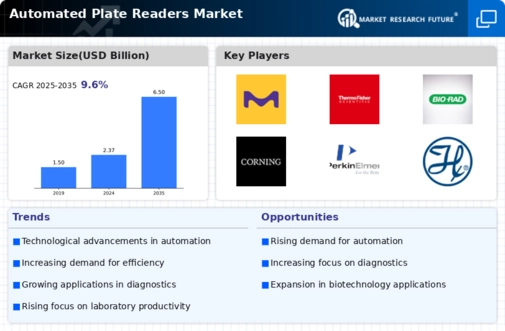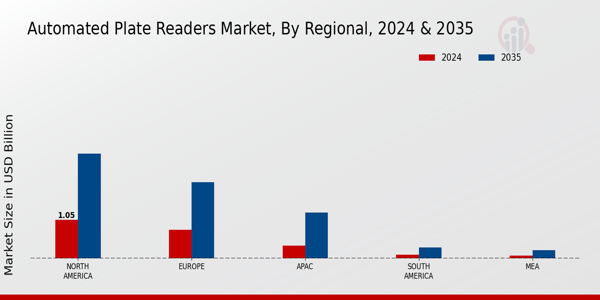Market Growth Projections
Expansion of Biopharmaceutical Sector
The expansion of the biopharmaceutical sector is a key driver of the Global Automated Plate Readers Market Industry. As biopharmaceutical companies continue to grow, there is an increasing need for efficient laboratory processes to support the development of biologics and biosimilars. Automated plate readers are essential for high-throughput screening and quality control in these processes. The biopharmaceutical market is projected to witness substantial growth, further propelling the demand for automated solutions. This trend underscores the importance of automation in meeting the rigorous standards of biopharmaceutical manufacturing and research.
Growing Focus on Personalized Medicine
The shift towards personalized medicine is significantly influencing the Global Automated Plate Readers Market Industry. As healthcare providers increasingly adopt tailored treatment approaches, there is a heightened demand for precise and efficient diagnostic tools. Automated plate readers facilitate the analysis of patient-specific data, enabling healthcare professionals to make informed decisions. This trend is particularly evident in oncology and genetic testing, where rapid and accurate results are crucial. The market's expansion is likely to be fueled by this focus on personalized healthcare, as stakeholders recognize the value of automation in enhancing patient outcomes.
Technological Advancements in Automation
Technological advancements play a pivotal role in the growth of the Global Automated Plate Readers Market Industry. Innovations in imaging technologies, software integration, and data analysis capabilities are enhancing the functionality of automated plate readers. For example, the incorporation of artificial intelligence and machine learning algorithms is enabling more accurate and faster data interpretation. These advancements not only improve the reliability of results but also facilitate the handling of complex assays. As the industry evolves, the integration of these technologies is likely to attract more users, contributing to a projected market growth to 6.5 USD Billion by 2035.
Rising Demand for High-Throughput Screening
The Global Automated Plate Readers Market Industry is experiencing a surge in demand for high-throughput screening technologies. This trend is largely driven by the increasing need for rapid and efficient analysis in drug discovery and development processes. For instance, pharmaceutical companies are adopting automated systems to enhance their screening capabilities, thereby reducing time and costs associated with traditional methods. The market is projected to reach 2.37 USD Billion in 2024, reflecting the growing reliance on automation in laboratory settings. As research institutions and biotech firms continue to prioritize efficiency, the adoption of automated plate readers is expected to expand significantly.
Increased Investment in Research and Development
The Global Automated Plate Readers Market Industry is benefiting from increased investment in research and development across various sectors, including pharmaceuticals, biotechnology, and academic institutions. Governments and private entities are allocating substantial funds to enhance laboratory capabilities and foster innovation. This influx of capital is driving the adoption of automated systems, as organizations seek to streamline workflows and improve productivity. The commitment to advancing scientific research is expected to sustain the market's growth trajectory, with a compound annual growth rate (CAGR) of 9.61% anticipated from 2025 to 2035, indicating a robust future for automated plate readers.
















